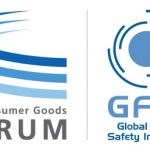The industry is taking notice and being more proactive in hygienic design thinking. Hygienic design is not a very new concept; in fact, it’s been around for almost a century when the dairy industry realized standardization was helpful with different parts. When the 3-A Sanitary Standards Inc. (3-A SSI) was established in 1920, the ideals for hygiene revolved around dairy handling equipment. But today, these hygienic design principles have been adapted by other industries, and new expectations for cleanability and standards have been developed by both 3-A and the European Hygienic Engineering and Design Group (EHEDG).
Geometry Is at the Core of Cleanliness
One of the most important factors that have helped the food industry in improving hygienic design is the use of geometry. How does math play such as huge role in hygiene? Hygiene, in the context of hygienic design for the food industry, takes the form of advanced materials formed into specific geometric positions to prevent the adhesion of particles and bacteria. A fraction of a degree angle changed in a cutting edge can make the difference between a smooth cut on a vegetable that allows it to swiftly slide off, thereby allowing the same cutting edge to be reused many more times than a cutting edge with a slightly different angle. This offers a functional benefit in achieving the optimal product quality while also reducing contact with the product and extending the time where buildup needs to be cleaned. The minimum radius of a corner for equipment parts and flooring are well defined for optimal water drainage. Similarly, the slope of a surface, the distance to angle ratios for otherwise horizonal liquid handling tubing, or the height and vertical sloping angles of a drain suitable for a processing zone are all key criteria that define hygiene. The scientific basis for why a certain angle works better than another for a specific purpose is continually being investigated to further improve design.
Standards and Guidelines Converge for Global Harmony
The effort by 3-A and EHEDG to harmonize design standards and guidelines respectively, is bringing about a convergence of approaches that benefits equipment manufacturers. EHEDG with its network of research institutes is capable of providing strong scientific principles upon which standards could potentially be developed or further enhanced. By working together to harmonize standards and guidelines, equipment manufacturers have even more incentive to adopt hygienic design principle. The 3-A SSI offers the 3-A Symbol authorization which helps third parties readily recognize that the equipment conforms to a given 3-A Sanitary Standard for equipment. So an original equipment manufacturer (OEM) is then not only encouraged to adopt hygienic standards, but also incentivized by the breadth of technical data available to them, making the excuse of costs associated with adhering to 3-A standard or EHEDG approval a thing of the past. Given that food safety depends on preventing contamination, new equipment or modifications that do not work to maintain hygiene are risks to the product.
In this new age, an equipment purchase that lacks the third-party nod of approval by a hygienic standards organization is a liability.
Equipment designed to be more easily wet cleaned by allowing for rapid disassembly while not always integrated into standards, is generally understood as a must for modern equipment. Moving equipment in and out of a single-use room for multiple processes is another benefit provided by equipment designed to accommodate quick changeovers. Accessibility is the key to cleaning success, as operators need to be able to fully access, clean and inspect the cleanliness of the equipment. Specifications for easements around equipment for cleanability are important.
Regulatory Requirements Should Inspire Equipment Design
FSMA brought sweeping changes to finally update the federal requirements for food safety that pointed to key areas that promote the use of sanitary conditions for producing, handling and transporting food. Prior to this, the meat industry had already been driving numerous best practices to cleaning equipment that have brought USDA inspected facilities a long way. The dairy industry’s focus on hygiene has been the gold standard for liquid handling, and the Pasteurized Milk Ordinance (PMO) set expectations for makers and inspectors to be familiar with good hygienic design, requiring it when it was absent.
But regulations always seek to provide broad guidance that is better executed by non-profits, NGOs and companies that serve to encourage adherence to standards, or those playing a pivotal role in buying decisions. Closely examining the U.S. Code of Federal Regulations and its references to sanitary design points to a vision for improving the state of equipment, facilities and transportation conditions to meet a higher threshold for hygiene that needs to be integrated into engineering designs by the OEM.
Materials Make All the Difference
Stainless steel has been used for over a century and is the standard metal used widely due to its corrosion resistance, formability and ability to be polished and renewed. The Nickel institute reports that two thirds of global nickel production is used in manufacturing stainless steel, forming an alloy that is suitable for food contact equipment and in healthcare.
The hygienic character of the material is directly proportional to the cleanability, moisture resistance and corrosion resistance. Rounded corners, super smooth finishes, slopes and numerous other criteria have been defined for a variety of equipment, surfaces, flooring, etc., in combination with a plethora of materials that provide water resistance, antimicrobial activity, metal detectable or flexible disposable seals, novel elastomers that provide heat resistance for O rings and joints have brought design to a higher level of sophistication than ever before.
Similarly, metallurgy is another area in which innovative alloys have been developed for softer or harder parts of a variety of equipment. Not all stainless steel is the same and while a 304 grade stainless steel works for most food contact equipment, other grades of stainless steel find their best uses in certain other parts of a hygienic facility. And pulling it all together, the design criteria for metal joints, especially those that come into contact with food, are best put together by skilled technicians who understand micro resistance design that promotes food safety.
Education and Awareness
The revolutionary aspect of today’s hygienic design really has more to do with a concerted effort to focus the industry on prevention. Several noteworthy contributions to this effort lay in the hands of organizations like the American Institute of Baking (AIB), North American Meat Institute (NAMI), American Frozen Food Institute (AFFI), and Commercial Food Sanitation (CF-SAN) that have individually or through partnerships with other key organizations, elevated the level of knowledge, accessibility of training and awareness that solid hygienic design for facilities and equipment are the foundations for prevention. And so, as we move forward, this really is an exciting time to be a student of good design and apply engineering talents to the food industry.
Third-Party Assessments
Hygiene can be defined as a set of activities or behaviors geared at preventing disease. Some of the earlier well documented instances of hygiene (or lack thereof) relating to food have their roots in cholera, dysentery associated with the industrial revolution and the need for human beings clustering into smaller and more populated regions, namely cities. But the notion of personal hygiene is inextricably joined to the production of food and will remain so for the foreseeable future. Assessing the hygienic condition of a food production environment is not the same as a food safety audit. To elaborate, a hygienic assessment requires comprehensive knowledge of sanitation systems, equipment design and evaluation criteria, which although included in general terms, are not well scoped in any of the GFSI schemes. In fact, facilities that have passed certain GFSI audits frequently fall seriously short on their ability to produce safe food.
A specialized hygienic assessment is a worthwhile option for big buyers, food service giants and large-scale processors to drive for predictable quality. These specialized audits conducted by organizations that have developed a focus for equipment design are being more frequently utilized as a preventive measure. When done right, they can also be powerful tools for driving positive food safety culture and developing long-term supplier relationships.








